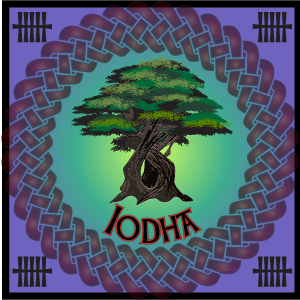Just because Halloween is over, does not mean we cannot talk about poisonous berries, death and the afterlife (and a surprise at the end), so here it goes.
Yew trees are one of the very few native Irish evergreen trees. It is usually seen planted in churchyards or large estates, but in the wild it is found in the understory of woodlands. In Ireland there is only one native yew tree wood, which can be found in Reenadinna wood on the Muckross Peninsula, Co. Kerry. It’s one of the places on my ‘must-see’ list.
All parts of the yew tree are toxic to livestock and humans. The only part which isn’t poisonous is the aril (red flesh) around a single very poisonous (if not lethal) seed. But please do not try this, as there have been a few poisoning reported, both of humans and accidental poisonings of farm animals. However, the berries are eaten by birds. The berries pass through their digestive tract and become more viable for germination and this also helps in the dispersal of seeds. The leaves on yew trees are dark green with a lighter underside. Unlike deciduous trees, yew trees keep their leaves for up to 5 years, after which new leaves grow and the old ones are dropped.

Most yew trees are single sex. In Ireland most of them are female, meaning they produce berries. The male flowers are yellow and found on the underside of the branches, the female flowers are bud-like and green. They are wind-pollinated. I had never noticed them flower until I did some research for the Wildflower Walk in St. Anne’s Park, Raheny last March. Here it is:

Yew trees are one of the world’s longest living trees. Some of them have been dated to be over 2000 years in old graveyards. Yew is traditionally associated with long life, a symbol of death, eternity and the afterlife, hence it being planted in graveyards. In England yews were planted there because they were said to take up the bad odours and humours of the dead- therefore sitting under a yew tree was said to be fatal due to the poisonous vapours it was said to release.
Yew trees can be found planted near houses as well, this was due to the myth that it provided protection from harm. In Scotland in particular it was planted to ward off witches and for safeguarding milk (from what I am not sure).
Apart from the magical powers the yew tree is said to have, it also has some practical uses, in particular the use of its wood. It provided very strong wood for croziers (hooked staff carried by a bishop) and shrines for books. It was used for making household containers, build building. The wood was used also used to make bows- the wood was strong, yet flexible, exactly what you need for a bow (I’ve been told). Yew wood preserves very well. This is shown by the fact that the world’s oldest known wooden artefact is a yew spear which 150,000 years old and was found in England.
Yew trees have been found to contain anti-cancer compounds (Taxol), which are harvested from the bark of some yews. Taxol was discovered to inhibit cell growth and division and it was therefore put to use in chemotherapy, halting the production of cancer cells.
Lots of towns in Ireland are named after trees. One of them being Newry, which is called after a yew tree planted by St. Patrick.
Now for the more complicated bit: The Ogham alphabet is an ancient Irish alphabet which is sometimes referred to as the ‘Celtic tree alphabet’. This is because the letters are thought to have been called after trees. It was thought that the letters were ordered into an ancient ‘seasonal calendar of tree magic’, aligning all letters with seasons. Due to its associations with death and eternity, the yew tree is places at Samhain or Halloween (a time of death of the old year) in the Ogham seasonal calendar.

Did you know that yew trees could change their sex? No, neither did I until I read the following article yesterday:
http://www.bbc.com/news/uk-scotland-tayside-central-34700033
It’s about what is thought to be one of the oldest living organisms in Europe called the Fortingall yew tree in Perthshire, Scotland. It is thought to be around 2,00-3,000 years old, but some estimates suggest it might be up to 5,000 years old! The reason for such a wide range of estimations is the fact that the oldest growth rings rot away, so it is very hard to tell the age of the tree. Back to the sex-change, the tree which is male was found to have red berries on one of its branches, showing that that branch was female. How extraordinary is that!
I hope you will go out and see the yew tree in a new light, but remember all parts are poisonous, so it is best not to touch it.
Ps. You might be wondering, why am I talking about a few trees and not a lot of wildflowers (yet) on this blog. The answer is, at this time of year a lot of trees are producing fruit (whether poisonous or edible) and most wildflowers (the herbaceous or shrubby ones) are dying back at this time of year. So I thought I’d describe some of the trees to you. Let me know what you think.